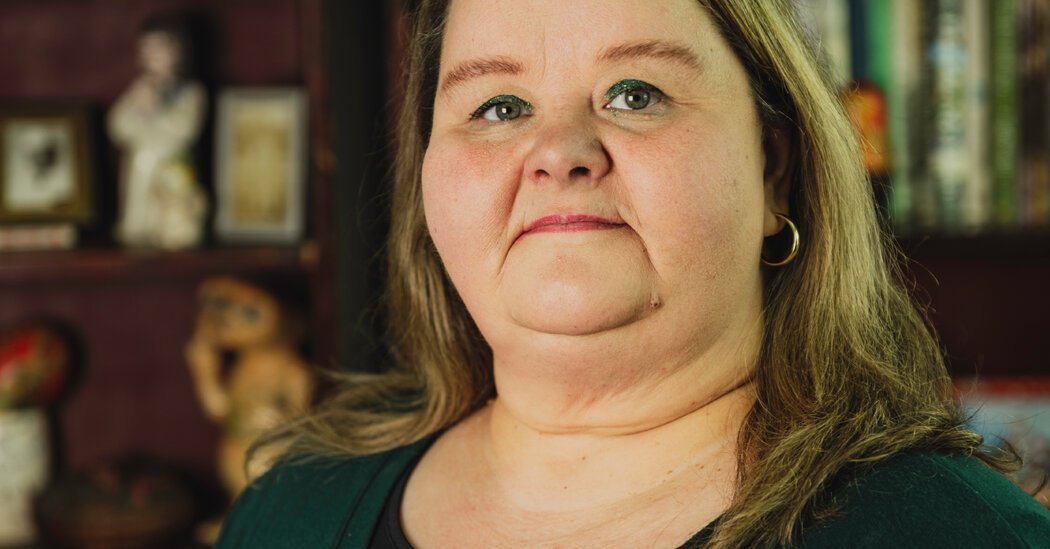After a five-year pause on penalizing borrowers for not making student loan payments, the federal government dropped the hammer. It instructed its loan servicers to start reporting late payers to credit bureaus at the start of the year.
The result: Millions of borrowers saw their credit scores plunge in recent months, and loan servicers are warning that a record number of borrowers are at risk of defaulting by the end of the year.
Only one-third of the 38 million Americans who have borrowed money to pay for college or graduate school and should be making payments actually are, according to government data.
Loan servicers estimate that this year around four million people have been reported to credit bureaus for late payments, and researchers at the Federal Reserve Bank of New York project that number will climb past nine million by the end of June.
Those rising numbers have implications for the broader economy, which has already shown signs of slowing. Low credit scores can prevent people from renting or buying homes and push them into pricier, riskier loans for cars, emergency cash and other everyday needs.
“It’s not a problem we want to add to the pile,” Preston Cooper, an economist and senior fellow at American Enterprise Institute, a conservative think tank, said of the student loan delinquencies.
And if millions of those borrowers end up defaulting, the cost will be borne by taxpayers.
Even borrowers with good credit are falling behind on their payments. More than 500,000 student loan borrowers with good to excellent ratings recently saw their scores dive by an average of 128 points — a huge drop that can knock a borrower with a good rating down to the lowest credit tier — because they are late on their payments, according to Credit Karma, a credit score tracking app.
“Many of the households required to resume paying on their student loans are also struggling with credit card debt at near-record interest rates and high-rate mortgages they thought they would be able to refinance into a lower rate, but haven’t,” said Mark Zandi, the chief economist at Moody’s Analytics.
The reasons so many borrowers aren’t paying are complicated, but current and former federal officials, loan servicers, borrowers’ advocates and others involved in the complex task of restarting collections point to two primary issues.
First, borrowers — as well as servicers and the Education Department, which manages the government’s student loan portfolio — have been whipsawed by frequent, major changes in their loans’ terms and repayment options.
Nine million people have their loans in forbearance, a status that pauses collections. Most of those loans are caught in lengthy processing backlogs at the Education Department or frozen by legal challenges to SAVE, a generous repayment program introduced by former President Joseph R. Biden Jr. that now seems certain to be struck down by federal courts or eliminated by the Trump administration.
And second, after such a long pause, many people are unable to incorporate a three-or four-figure monthly bill into their household budgets.
“You’ve gotten people out of the habit of repaying now for the better part of five years,” said Colleen Campbell, who resigned last month as the executive director of the Education Department’s loan portfolio management office. “For some borrowers, several cohorts of them, you’ve never built the repayment habit at all.”
Elissa Jane Mastel, 55, a marketer and teacher in Denver, saw her credit score fall more than 100 points recently because of her unpaid loans, which she said are caught in bureaucratic snarls. She sought to have some or all of her debt discharged through a program that forgives teachers’ loans after several years of payments, but she has not been able to get answers from her loan servicer about why her application has not progressed.
“I’ll be on hold for like four or five hours,” she said. “And then when you get the person on the phone, they’re like, ‘oh, I can’t help you.’”
Student loans have always been riskier than most other consumer loans: Before the pandemic, around one in five federal loan borrowers defaulted.
Because the government, not banks or private lenders, is the creditor for nearly all student loans, late payments and defaults don’t pose the kind of systemic financial risk that set off the mortgage crisis more than a decade ago.
During the Biden administration, the Education Department offered a “fresh start” program that moved millions of defaulted borrowers back into good standing. It paired that with a yearlong “on ramp” for late payers, during which loan servicers were instructed to pause delinquent borrowers’ loans and not report late payments. Millions of people saw their credit scores rise because of those actions, which were intended to let borrowers emerge from the pandemic with clean slates and move smoothly into repayment.
But those moves also inflated the number of borrowers who appeared to be current on their debts, sweeping in millions of people who had long struggled to make payments. As many of those people now drift back into delinquency, they’re joined by millions of newly delinquent borrowers.
Loan servicers say their collection data is flashing red warning signs. Nelnet, the government’s largest servicer, recently circulated an analysis to lawmakers that showed a huge spike in borrowers whose loans were four to five months overdue. Right before the pandemic, less than 1 percent of Nelnet’s accounts were at that point, at the edge of default. Now, more than 9 percent have reached the brink.
“Without immediate intervention, we could face the largest wave of defaults in the program’s history,” Nelnet warned.
Federal student loans default when they are more than 270 days overdue — a point that people who never resumed paying after the pandemic pause will reach this fall. That’s when the full picture of how many borrowers are not making payments will become glaringly clear, experts predict.
“Let’s say five million of those people default. That’s a really bad outcome for the country, economically,” Ms. Campbell said.
Adding to the turmoil are the barriers confronting borrowers trying to sort through their payment options. Instead of increasing Education Department staffing to handle a work surge and clarifying the often-shifting rules of its myriad repayment programs, the government has done the opposite.
Mr. Trump instructed Education Secretary Linda McMahon to shut down her agency, though that cannot be done without congressional approval. He amplified the confusion by announcing that the student loan portfolio would move to the Small Business Administration, a change that also cannot be accomplished without Congress.
But Congress has shown no interest in that idea, and no serious planning was done before or after the president’s announcement, according to seven people familiar with the administration’s discussions, who asked for confidentiality to speak about private talks.
Taylor Rogers, a White House spokeswoman, said the administration was “working diligently” to carry out the president’s order and shift some of the Education Department’s functions to other agencies. Caitlin O’Dea, the Small Business Administration’s communications director, said her agency was coordinating transfer plans with the White House, Congress, the Education Department and the Treasury Department.
“As the government’s largest guarantor of business loans with an existing portfolio of $444 billion, the S.B.A. is well-prepared to apply its experience in responsible lending, risk management and loan servicing,” she said. The Education Department did not respond to requests for comment.
The president’s decrees, coupled with plans to fire 46 percent of the Education Department’s employees, hollowed out the agency’s already understaffed Federal Student Aid office to the point of near collapse, according to current and former agency employees.
In social media posts and discussion groups, borrowers have shared stories of hourslong waits when they try to reach their loan servicer, often only to find that customer service representatives have few answers.
Borrowers enrolled in the SAVE plan are able to keep their loans paused while the legal challenges proceed, but they have no idea when they’ll have to start paying again, or how much those payments will be. More than one million borrowers have been waiting, often for months, for the Education Department to process their applications for income-driven repayment plans.
“I’m seeing people lose their minds like I have never seen in the 20 years that I’ve been doing this,” said Alan Collinge, the founder of Student Loan Justice, an advocacy group that hosts a Facebook forum on which thousands of borrowers share advice and rants.
Heather Lawton, 48, finished a master’s degree in health administration last year and then consolidated her graduate and undergraduate loans. Ms. Lawton, who lives in Gainesville, Fla., and works as a credentialing specialist for a health-care chain, applied for an income-driven payment plan. Based on the government’s repayment calculator, she anticipated a monthly bill of around $490.
Instead, she was enrolled in a 10-year payment plan and got a bill in January for $924. She called her servicer, and soon after received a revised bill, but for an even higher amount: $1,014. After hours of phone calls, stretching across weeks, she still has not resolved the issue.
“This ordeal has led me to question the entire system,” she said. “I just want to do the right thing by paying what I owe. But I also deserve a clear and correct bill.”




